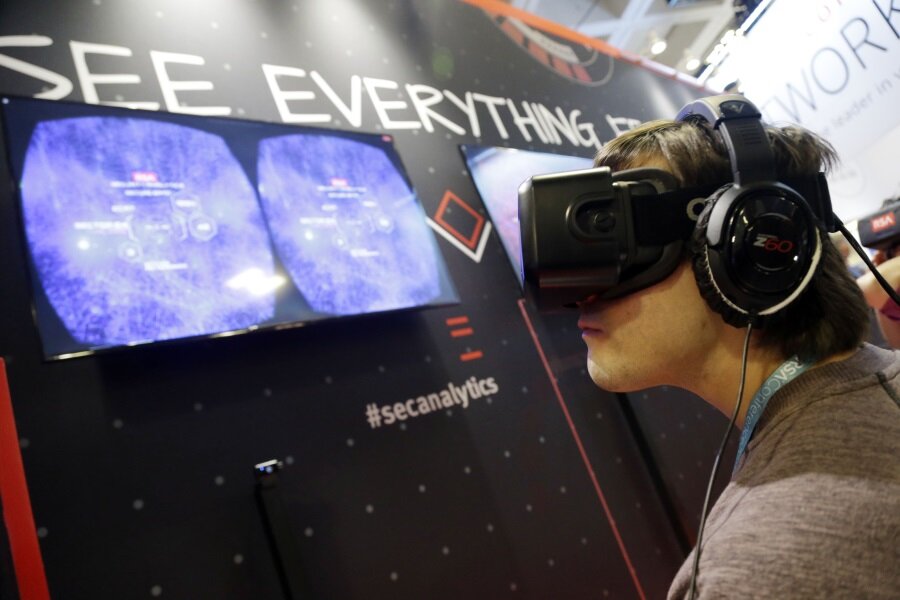Oculus Rift VR headset will go on sale in early 2016
Loading...
Oculus, the Facebook-owned company behind the Rift virtual-reality headset, has finally planted a flag on when people will be able to buy its product. The consumer version of the Oculus Rift will start shipping in the first quarter of 2016, the company announced Wednesday in a blog post. And if you’re really keen to get your hands on one, you’ll be able to preorder a headset starting later this year.
The first Oculus Rift model, which was essentially an LCD screen taped to a pair of ski goggles, came out way back in 2012. A slightly redesigned prototype model made waves at the 2013 Consumer Electronics Show, and Oculus raised more than $2 million on Kickstarter to help fund the Rift’s development. Facebook bought the company last year for $2 billion.
Oculus’s blog post didn’t say how much the consumer VR headset would cost. The developer kit released in 2013 cost $300, but only 10,000 kits were shipped. Oculus has always said that the eventual consumer headset would be affordable, since it uses standard electronic components found in smart phones and tablets.
When the Rift was first announced nearly three years ago, Oculus was the only company working on a modern virtual reality headset. But Oculus now faces some competition on the hardware front. Samsung’s Gear VR headset, which runs Oculus software, should be available before the end of the year. (A $200 “Innovator Edition” is available now, but it’s just a set of goggles designed to hold a Galaxy Note 4 smart phone a specific distance from your face.) Sony’s Project Morpheus headset, which will connect to the PS4 gaming console, will ship in 2016, although the company hasn’t said exactly when. There’s also the Vive, which is being developed by HTC and video game company Valve. HTC has said that a consumer version of the Vive will be available by the end of 2015.
Oculus has been tweaking the design of the Rift to make it lighter and less bulky than previous prototypes. The consumer Oculus Rift will also have built-in headphones with positional audio, meaning it can simulate realistic sounds for virtual objects (so if the display shows you walking closer to a river, for example, the sound will get louder as you appear to get closer). It will also have head tracking technology that will let a user gaze around a virtual world just as they would a real one, without getting motion-sick.






